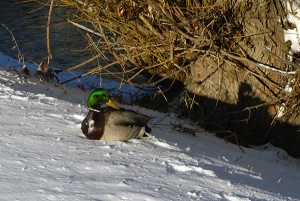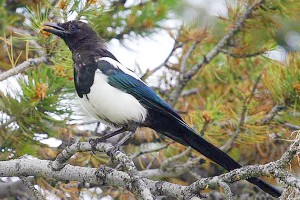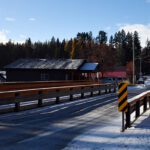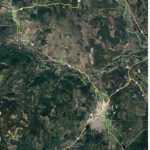Home »

Barrow’s Goldeneye among species counted at Fernie
The first of three Christmas Bird Counts in the East Kootenay was held on Friday, December 18 at Fernie.
About 18 birders from the surrounding area spent a mild, snowy day searching the woods, riverbanks, fields and back alleys. Evidently, well-stocked bird feeders played an important role, attracting a wide variety of birds. Due to mild weather, the low elevations had been free of snow and ice until a couple of days before the count.
 Normally, the lack of open water and bare ground tends to concentrate the birds in a limited area where food is available. This year, it was difficult to find birds because they were scattered far and wide.
Normally, the lack of open water and bare ground tends to concentrate the birds in a limited area where food is available. This year, it was difficult to find birds because they were scattered far and wide.
Common winter birds, including Pine Grosbeaks and Bohemian Waxwings, had apparently moved on because berry crops were stripped earlier in the fall. Winter finches like Common Redpolls, easily seen in October and November, now appear to have gone elsewhere to forage. We succeeded in finding 743 individuals representing 29 species, including some White-winged Crossbills during ‘count week’.
Barrow’s Goldeneye (pictured above), with their brilliant yellow iris, are particularly attractive black and white diving ducks, often mixed with flocks of Common Goldeneye. This species was originally described from a population living in Iceland. However, it is primarily a duck of the western mountains of North America and can be found throughout most of the year in the East Kootenay. These birds forage underwater, eating aquatic insects, crustaceans, fish eggs and plant material, preferring not to compete with too many insect-eating fish. Their breeding habitat consists of wooded lakes and ponds.
Because much of it’s nesting is done in cavities found in mature trees, the Barrow’s Goldeneye is considered an arboreal bird species. The birds will also nest in burrows, protected sites on the ground and in nest boxes. Females return to the same breeding sites year after year and also tend to use the same nesting sites. The males stay with their mate through the winter and defend their territory during the breeding season, then leave for the moulting site. Even though the pairs are apart for long periods of time over the summer, they reunite at the wintering areas. These ducks migrate in order to spend the winter in protected coastal waters or open inland waters. In particular, coastal estuaries provide excellent wintering and stopping places during migration.
This is a quiet bird that generally makes vocalizations only during the breeding season, but, in flight, their wings make a low, whistling sound.
Like the Common Goldeneye, Barrow’s are not too particular about holding on to their own offspring. A female may lay eggs in the nest of another Goldeneye or other species of cavity-nesting duck. Once the ducklings come out of the nest, about two days after hatching, the broods of different females often come together and are taken care of by a single female. The young ducklings are highly independent, feeding on their own and requiring little parental care.
For a duck, Barrow’s are a long-lived species; often living 15 years or more, and populations appear fairly stable. At Elizabeth Lake, Cranbrook, Goldeneyes and their ducklings can be seen in the spring where they use nest boxes and natural cavities.
The Fernie List
Mallard – 121
Common Goldeneye – 138
Barrow’s Goldeneye – 5
Eurasian Collared-dove – 1
Northern Pygmy Owl – 1
Downy Woodpecker – 4
Northern Flicker – 14
American Three-toed Woodpecker – 1
Northern Shrike – 1
Steller’s Jay – 16
Blue Jay – 6
Black-billed Magpie – 17
American Crow – 24
Common Raven – 36

Black-capped Chickadee – 89
Mountain Chickadee – 5
Red-breasted Nuthatch – 3
White-breasted Nuthatch – 1
American Dipper – 7
Bohemian Waxwing – 77
Song Sparrow – 4
Dark-eyed Junco – 9
Pine Grosbeak – 85
House Finch – 13
White-winged Crossbill (count week)
Common Redpoll – 8
Pine Siskin – 23
House Sparrow – 30
– Submitted by Daryl Calder on behalf of Rocky Mountain Naturalists








